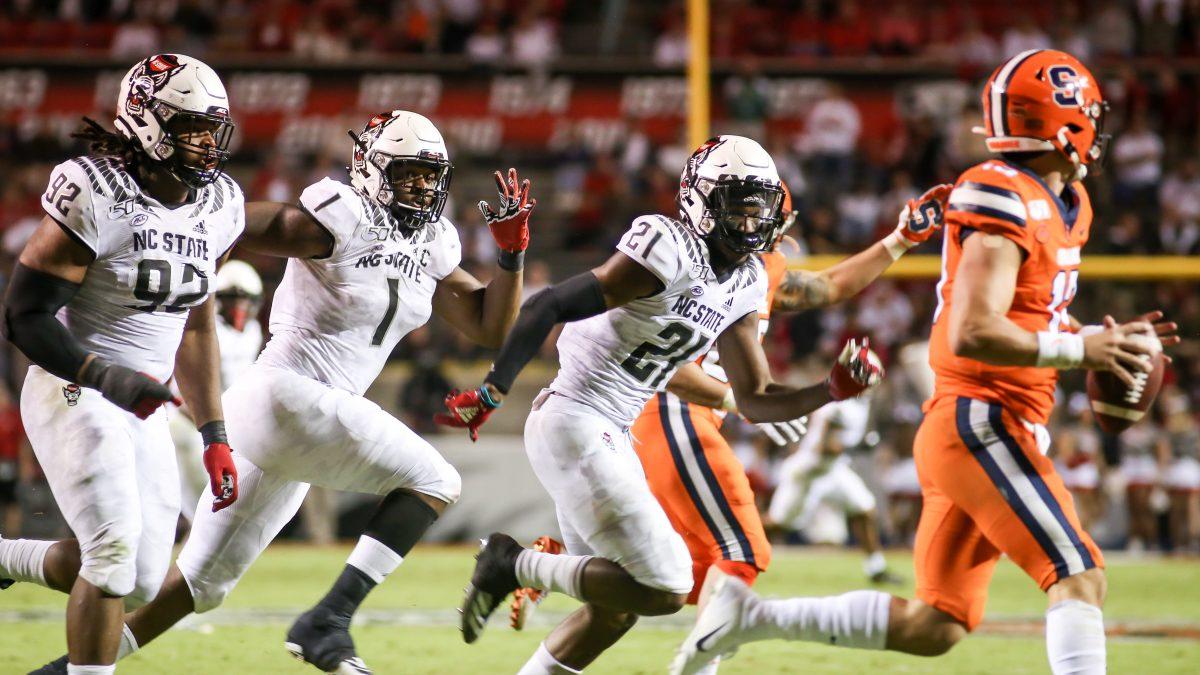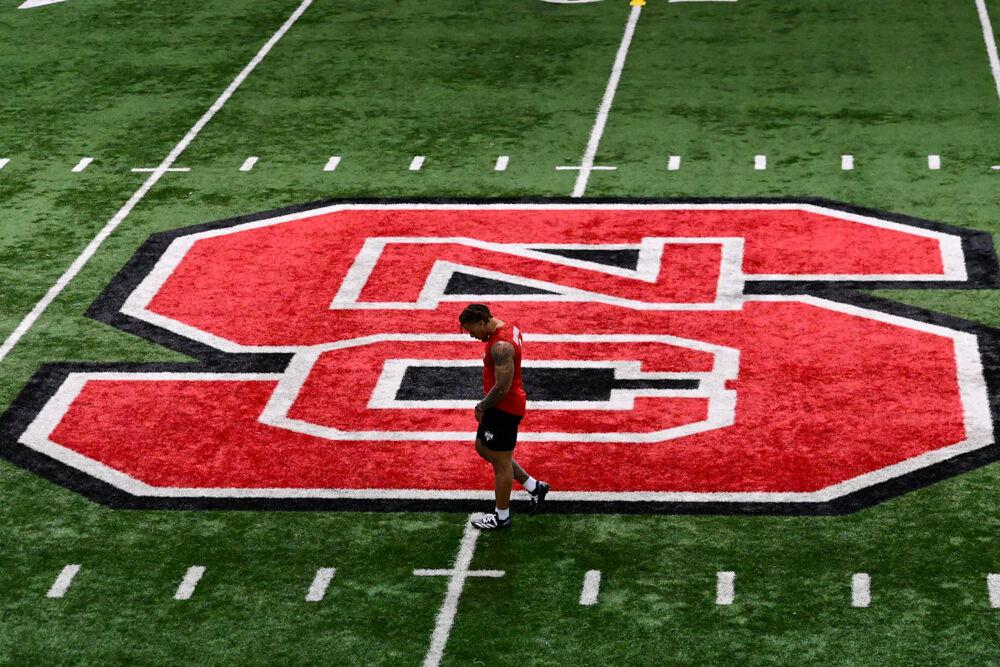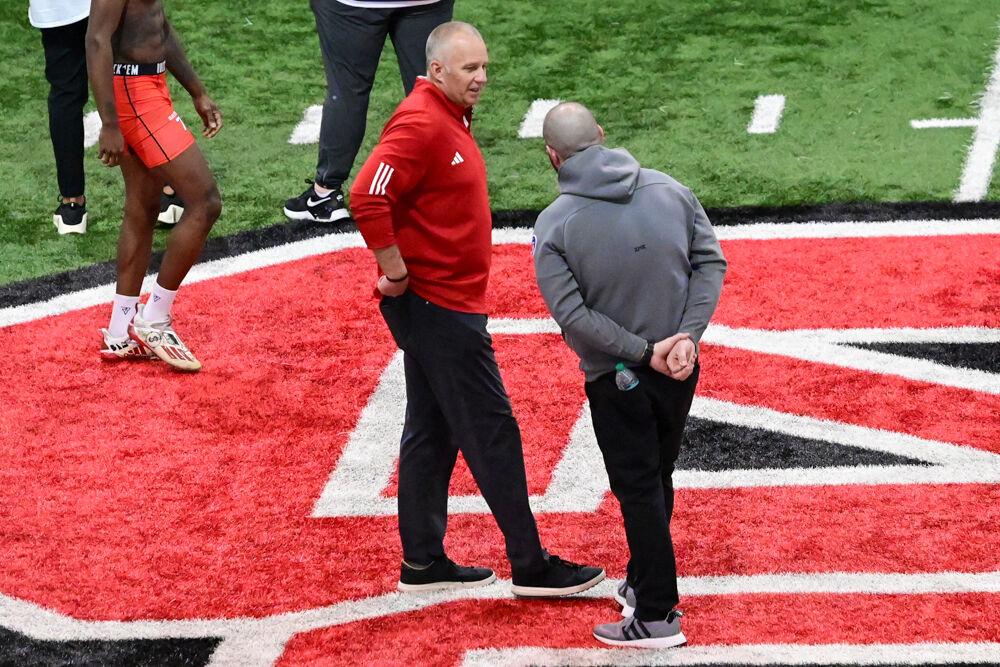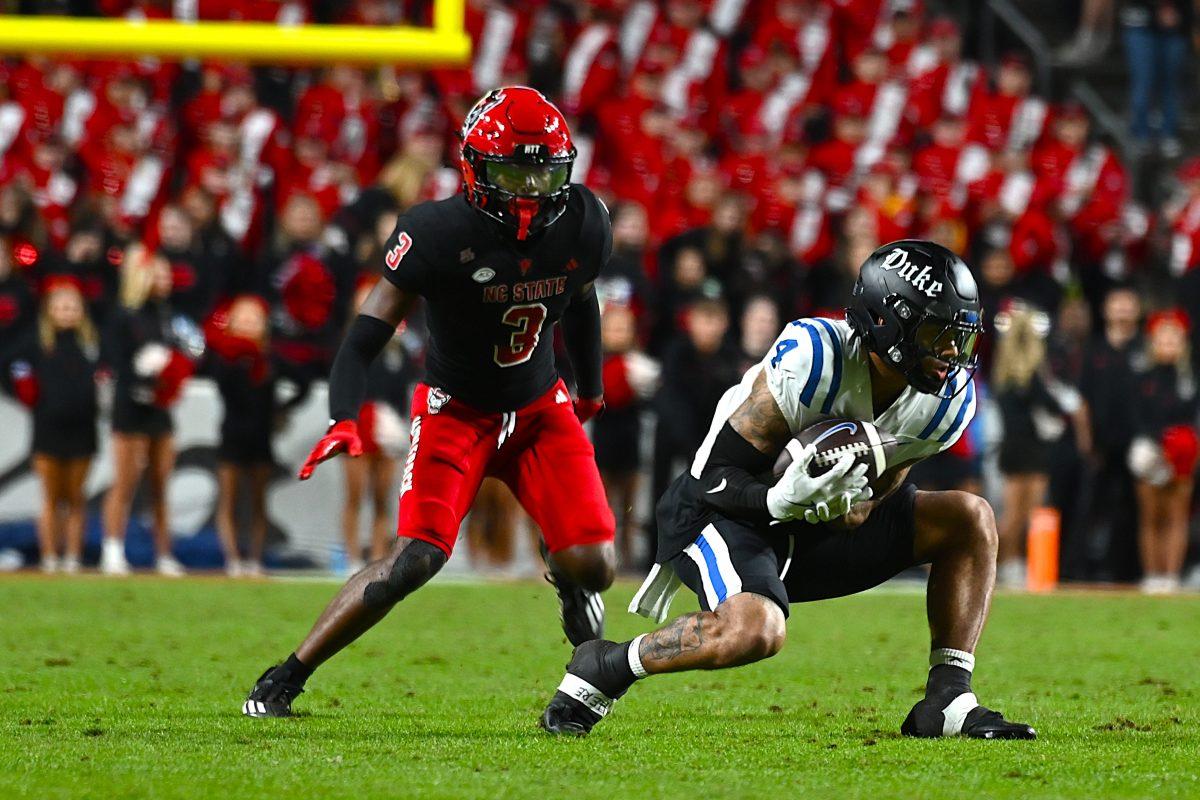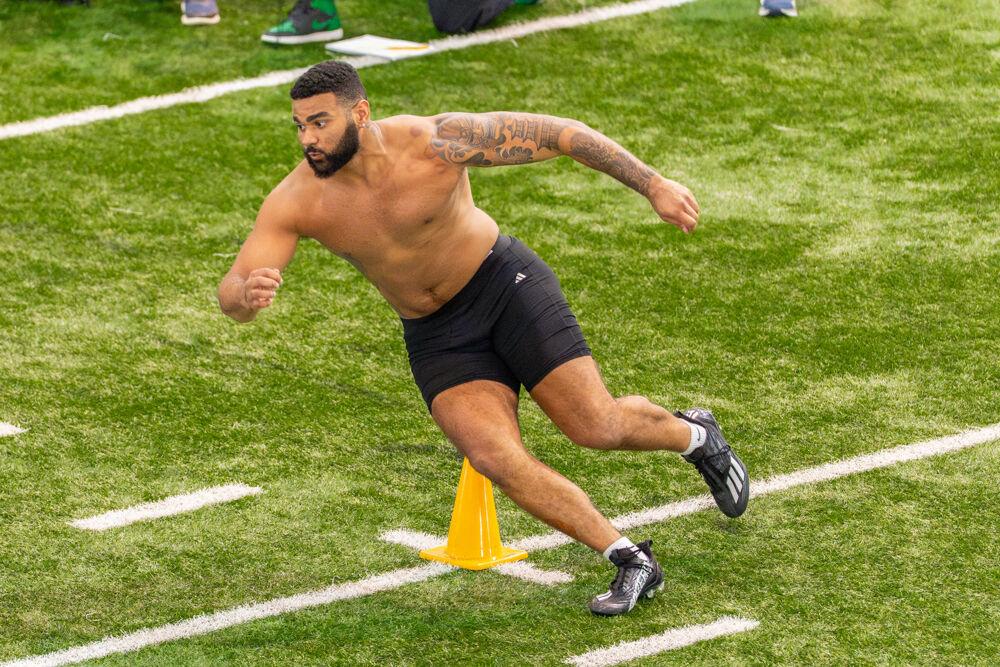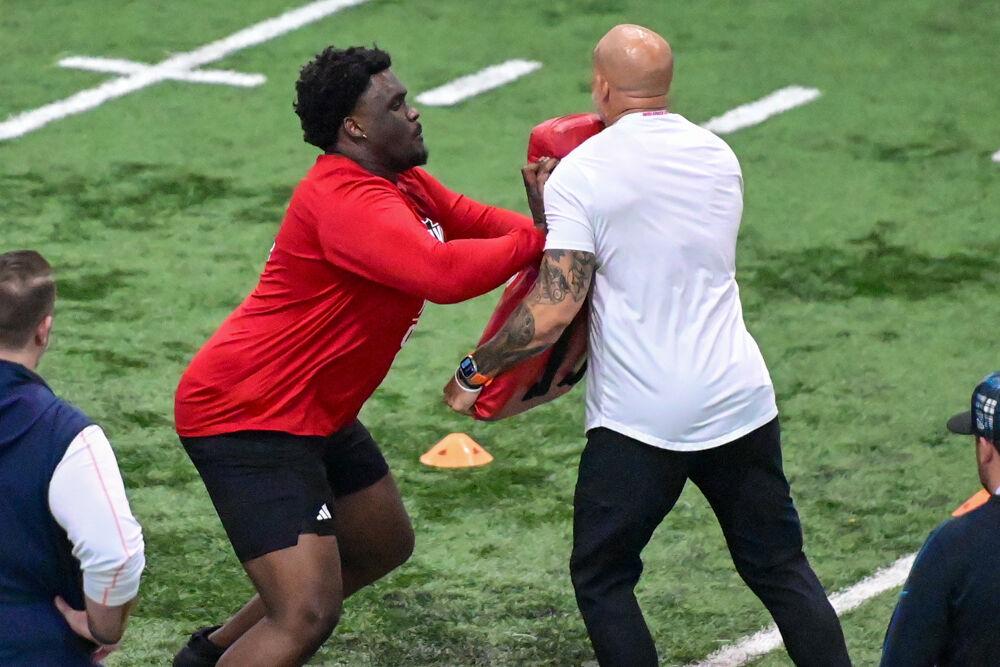NC State football will take on rival UNC-Chapel Hill at home in Carter-Finley Stadium Saturday, Nov. 26 to conclude the season. The Wolfpack (4-7, 1-6 ACC) has the potential to take away the Tar Heels’ (5-6, 3-4 ACC) bowl eligibility if it can hand the Tar Heels a loss. Despite giving up 21 points in the first half to Georgia Tech in its previous game, the Wolfpack defense only gave up seven points in the second half and might be able to use that momentum going into the rivalry game.
Secondary vs. UNC quarterback and receivers
The Wolfpack secondary only allowed 129 passing yards against Georgia Tech and forced the QB to throw under a 50% completion rate, completing 7-of-15 passes. However, the secondary struggled in the red zone, giving up three passing touchdowns.
UNC quarterback Sam Howell has been a dangerous deep-throw and red-zone threat, which are the main weaknesses of the Wolfpack’s defense. Georgia Tech exploited this weakness on one of the very first plays with a bomb of a pass to set them up for a passing touchdown a minute later. Howell has racked up an impressive 32 passing touchdowns and accumulated 2,946 passing yards on the season while only throwing six interceptions in 11 games.
NC State’s secondary has suffered significant losses due to injury all year and has definitely struggled as a result. NC State allows 238.7 per game while UNC allows 239.5 per game. UNC does average 270.9 passing yards per game so we should expect the Wolfpack to allow more passing yards than usual. This could be due to the fact that UNC has played stronger nonconference opponents at the beginning of the year, but still, both teams’ quarterbacks should come out firing to start the game.
Linebackers vs. UNC running backs
The Wolfpack linebackers have been inconsistent all year in stopping the run game. NC State allowed 266 rushing yards to Georgia Tech but contained the run game in the red zone, only allowing one rushing touchdown. However, the linebackers held Louisville to only 77 rushing yards and no rushing touchdowns and Florida State to 53 yards and one rushing touchdown, despite giving up 429 rushing yards and five rushing touchdowns to Boston College. There is almost no telling how the linebackers will perform on a week-to-week basis, but if the linebackers are playing up to par, they will give up very few rushing yards, as we saw against Louisville and even Florida State.
Although not being the focal point of the offense, UNC averages 184.4 rushing yards compared to NC State’s 152.9, which has been an important part of the Wolfpack’s offense all season. The Tar Heels have a trio of running backs in rotation with two running backs over 750 rushing yards and a third over 300 rushing yards, which is similar to the rotation of NC State’s running backs.
There most likely won’t be a ton of carries on the UNC side, so the Wolfpack linebackers will look to stop the Tar Heel running backs every chance it gets.
D-line vs. UNC O-Line
The Wolfpack D-line has been okay at getting to the quarterback recently, sacking the quarterback four times in the past three games. The D-Line has seen better times coming off of a zero sack game against Georgia Tech.
The UNC front four has struggled recently in conference play, giving up nine sacks in the past three ACC games. The UNC O-Line has struggled all year as well, giving up 34 sacks in 11 games compared to NC State’s 17 sacks allowed. If NC State wants to stop the prolific pocket passer Howell, then the D-Line needs to get to the quarterback as much as possible.
With both teams allowing over 375 total yards per game, the rivalry game should be filled with not much defense, but a substantial amount of offense and scoring.


